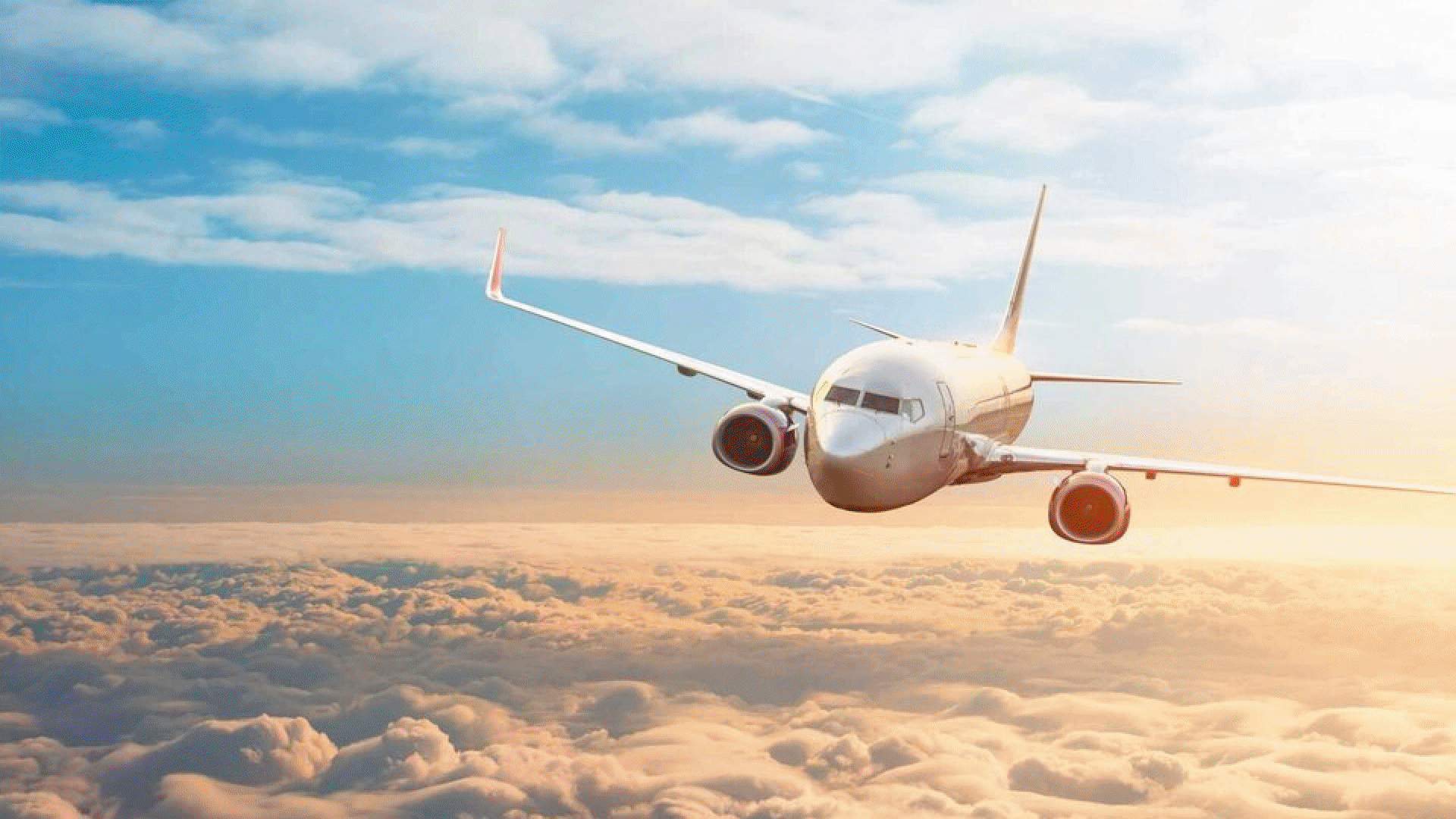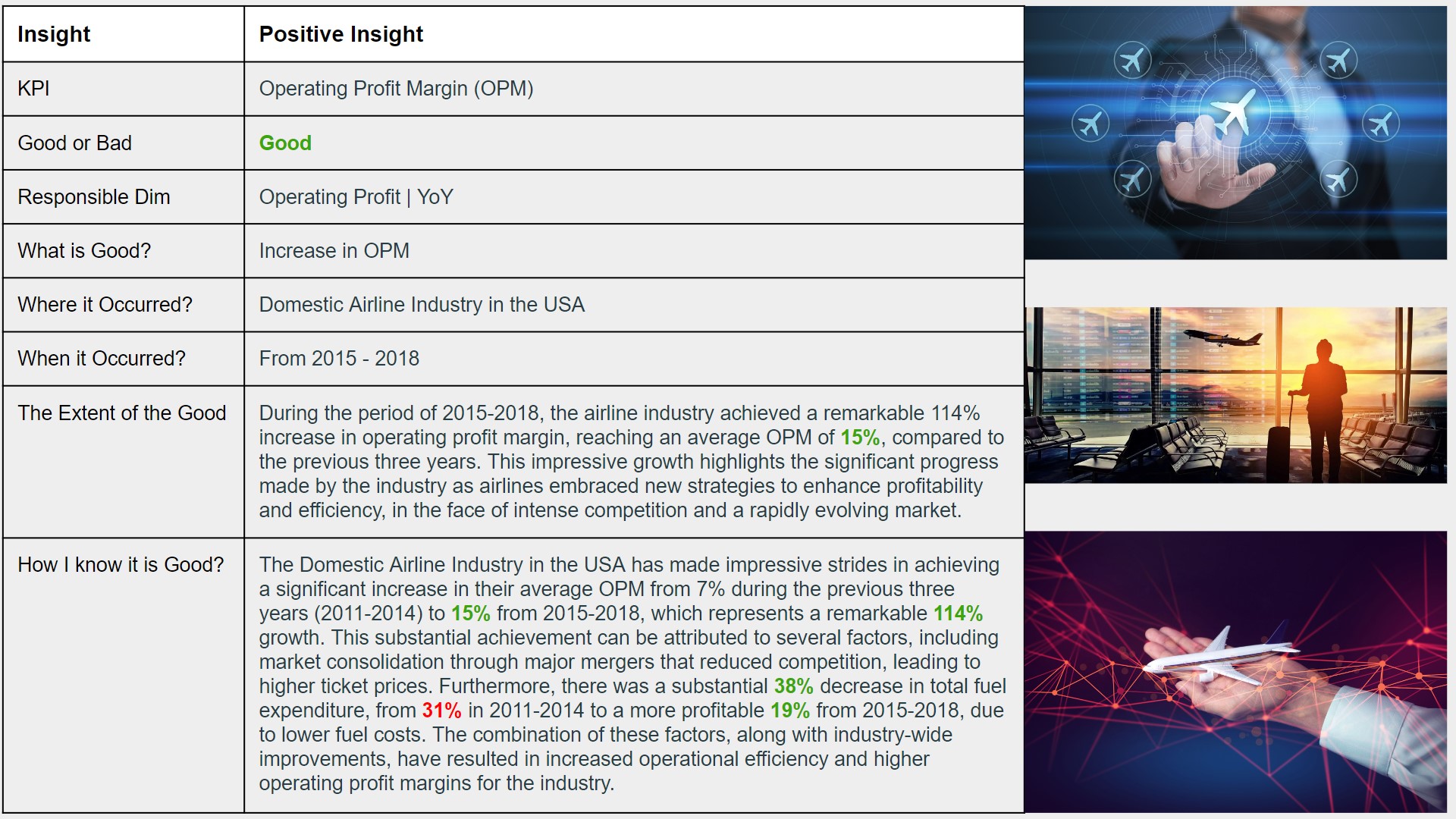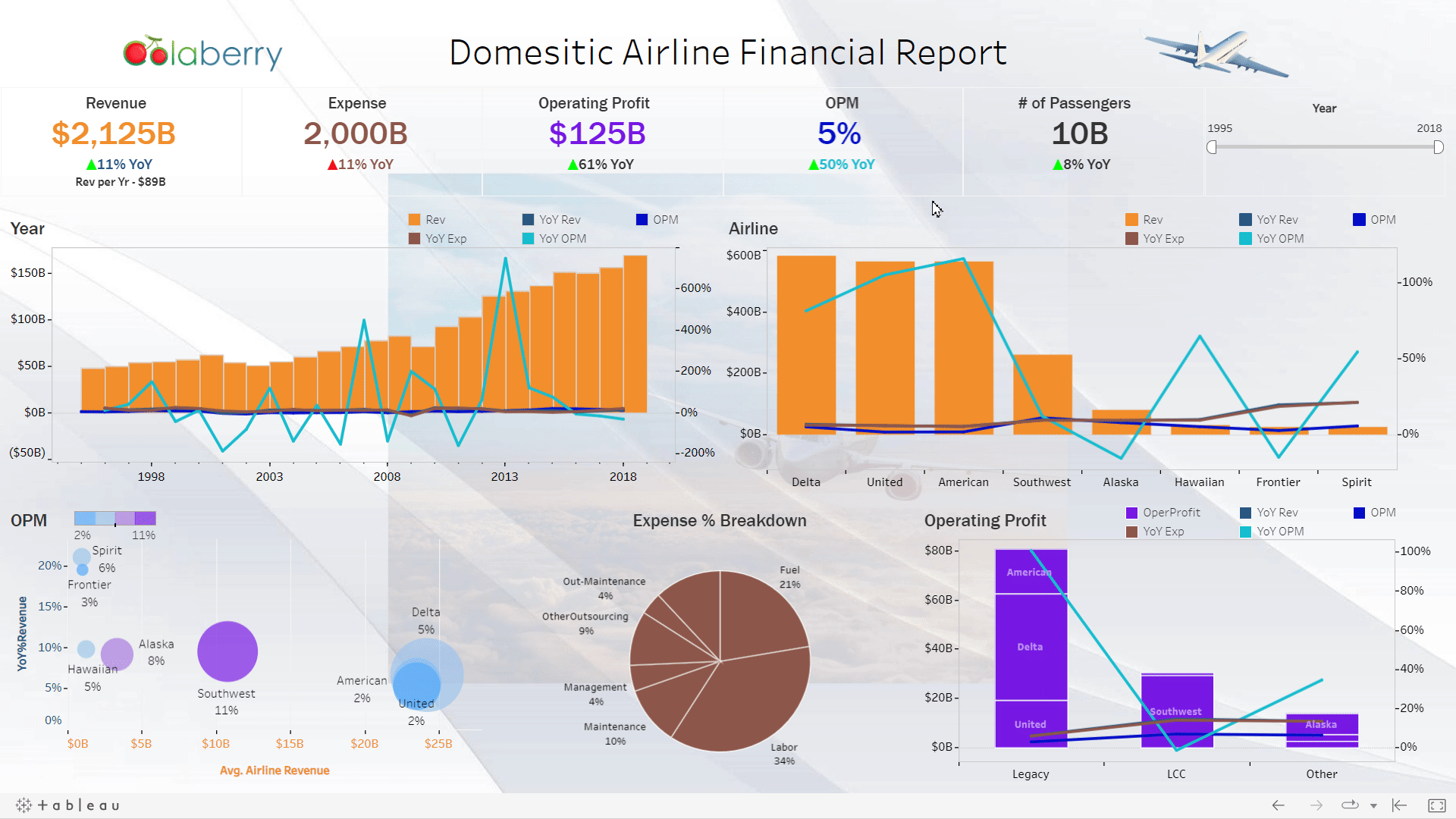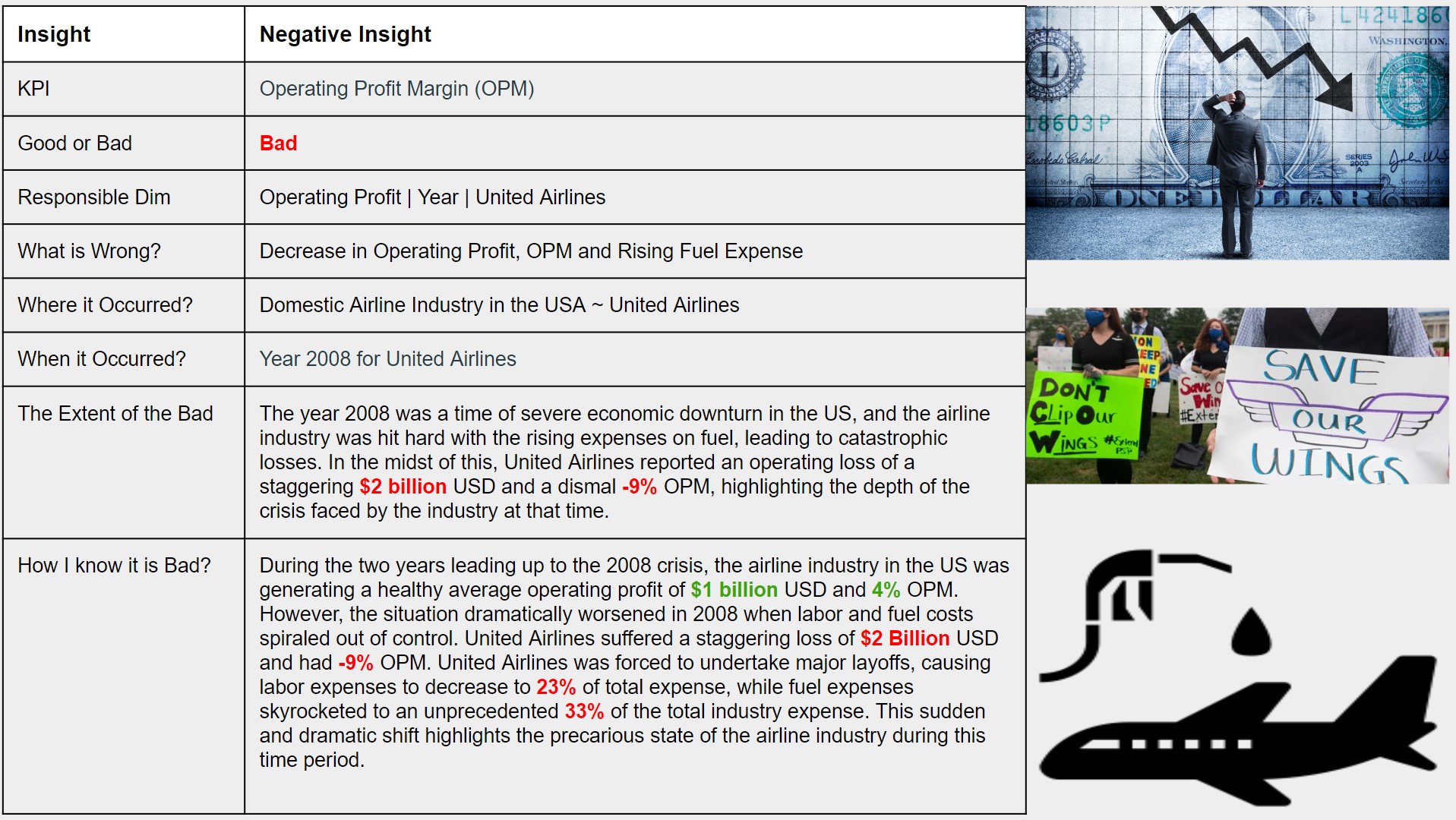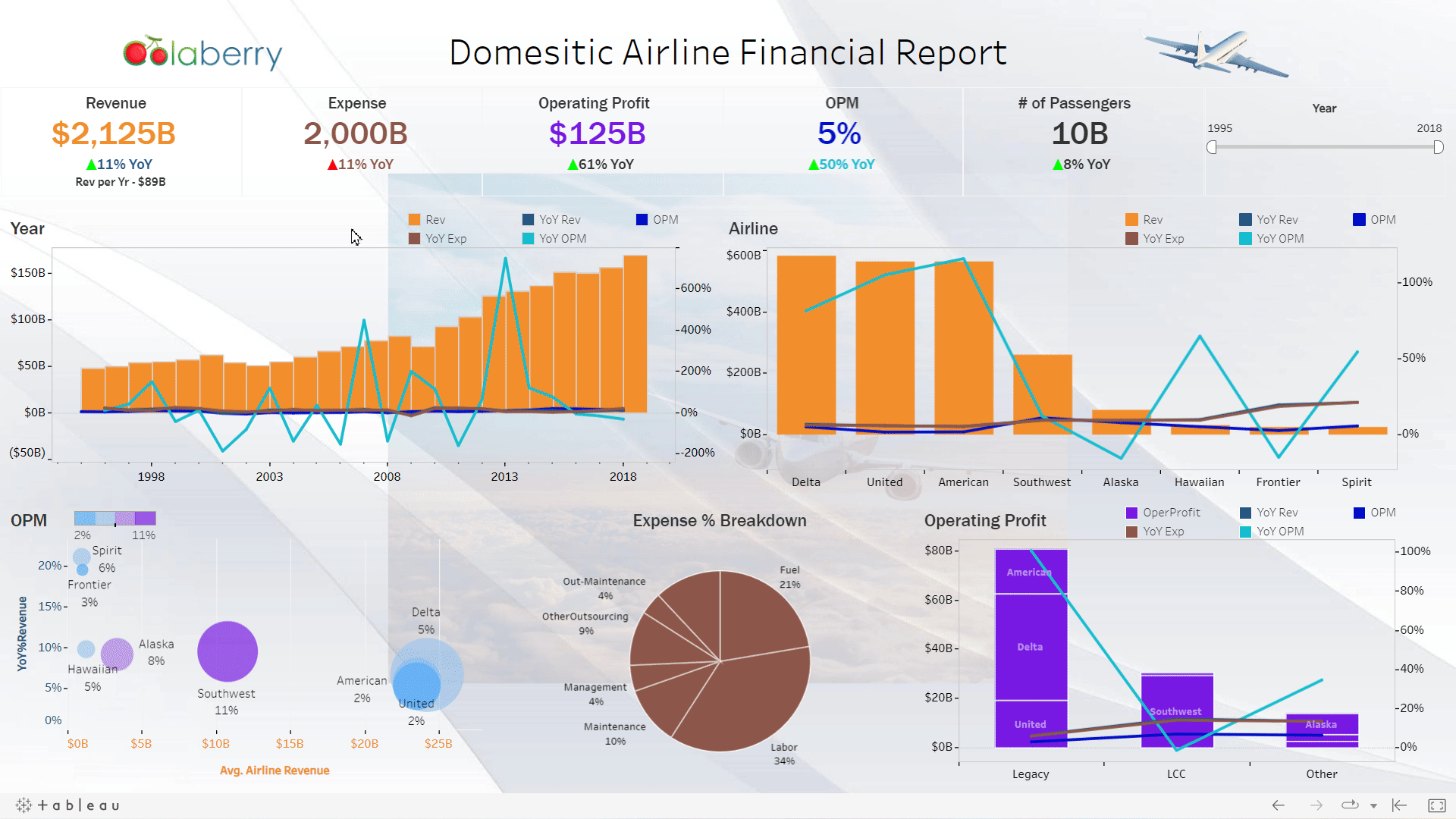Completion Date:
Project Overview
Fly high or crash and burn: Navigating the complex US airline industry. The US airline industry is an intricate and constantly evolving web of competition, diversity, and regulation that demands considerable capital and labor investment. This dynamic sector remains heavily swayed by external economic factors and shifting market trends, despite its deregulation. With the pivotal role that airlines play in connecting people and businesses worldwide, a thorough and astute analysis of this complex landscape is imperative for any investor seeking to boost their bottom line.
Role:
Problem Statement
Investing in the USA domestic airline industry presents a challenging proposition, with high capital and labor investment, intense competition, diverse market trends, and strict regulatory constraints. The Bureau of Transportation Statistics (BTS) reported that the total operating revenue for the airline industry in the USA was approximately $172.7 billion in 2019, while the total operating expense was $159.5 billion, leading to a narrow profit margin. During the COVID-19 pandemic, several big investors, including Warren Buffett\\\\\\\'s Berkshire Hathaway, incurred substantial losses due to the significant decline in airline travel. This underscores the importance of carefully analyzing and evaluating revenue and expense trends to make informed investment decisions and ensure a profitable return on investment in this dynamic industry.
Next Steps
1. Based on my research and analysis of the data, it is clear that the airline industry faced a devastating loss
of $7 billion after the 9/11 terrorist attacks. Many airlines were forced to ground flights, faced increased
security measures, and incurred heightened insurance costs due to fear of further attacks.
• Based on this Data My Recommendations are:
1. Improve Security Measures:
• Investing in research and development of improved screening technology and stricter identification
requirements can help enhance aviation security. This recommendation is also supported by the
International Civil Aviation Organization (ICAO), which advocates for enhancing security measures
and crisis management protocols to improve aviation security.
2. Build a Strong Brand:
• Strong branding and reputation can help airlines weather crises by building customer loyalty and
trust. This recommendation is backed by the Airline Passenger Experience Association (APEX),
which highlights the importance of building loyalty and trust in an uncertain world.
2. The Airline industry in 2002 showed no signs of recovery from the Aftermath of the 2001 - 9/11 attack,
the industry which was at a 7 billion dollar loss (-4%OPM) dipped even further to -7% OPM, this was due
to Iraq war and SARS Viral Outbreak in 2002-2003.
• Based on this Data My Recommendations is:
1. Flexible Pricing:
• Develop Flexible Pricing Strategies: Airlines should develop flexible pricing strategies that can
quickly adapt to changes in demand and market conditions.
• Airline Business: \\\\\\\"How airlines use dynamic pricing to boost revenues\\\\\\\" -
https://www.flightglobal.com/strategy/how-airlines-use-dynamic-pricing-to-boost-
revenues/130172.article
3. According to the data in 2008 financial crisis, the USA domestic airline industry faced a significant decline
in demand as consumer spending decreased, resulting in a loss of approximately $3 billion. Airlines were
forced to ground flights, lay off employees, and reduce capacity to remain operational.
• Based on this Data My Recommendations are:
1. Fuel-Efficient Aircraft\\\\\\\'s:
• Invest in Fuel-Efficient Aircraft: Airlines should invest in fuel-efficient aircraft to reduce operating
costs and improve profitability.
• Supported by International Air Transport Association (IATA): \\\\\\\"Climate Change\\\\\\\" -
https://www.iata.org/policy/environment/Pages/climate-change.aspx
2. Invest in Employee Training and Retention
• Upskilling Employees and giving proper compensation means you can increase the quality of the
labor force and decrease the overall expense.
• Supported by Harvard Business Review: \\\\\\\"Why the Airline Industry Needs to Change\\\\\\\" -
https://hbr.org/2019/06/why-the-airline-industry-needs-to-change
4. Also from the Data - 2010 had $6 billion USD in profits and a 6% operating profit, and was reduced to a
mere $3 billion USD in profits and 4% operating profit margin in 2011 - the domestic airline industry faced
a major setback due to the aftermath of the Arab Spring and natural disasters in Japan, resulting in a
decline in air travel demand.
• Based on this Data My Recommendations is:
1. Enhance Crisis Management Protocols:
• Improving crisis preparedness, enhancing communication, and working closely with government
agencies to help ensure a coordinated response to handle situations can mitigate losses during
crises. This recommendation is supported also by ICAO which stresses the importance of improving
crisis management protocols to prevent devastating losses to the aviation industry.

Deployment
You can Click on the Dashboard, it is fully interactive.
If you see ######### on your screen this means your screen is too small, I do apologize for the inconvenience. I built this on a 13 inch screen, so if you own a smaller screen it may have a display issue.
